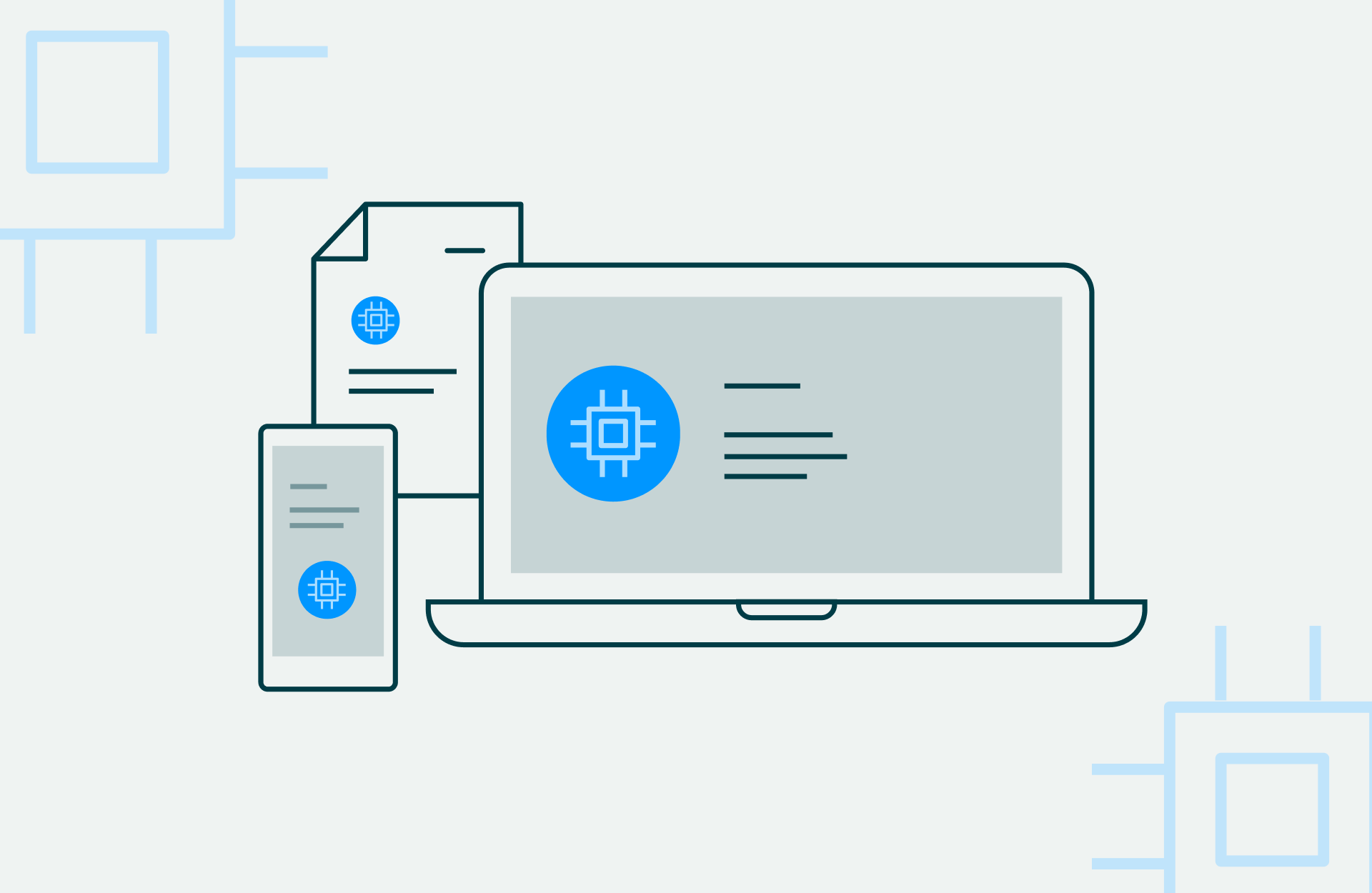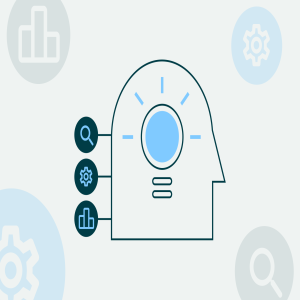Generative AI writing tools have imploded some of the best-laid educator plans. When I was a new teacher, one idea that was repeated to me was, “It’s better to think on your seat than on your feet!” Planning carefully is certainly a huge part of success in the classroom, but as we’ve seen with the arrival of AI writing tools in everyone’s newsfeeds and–not long after– into our classrooms, teaching and planning has been forever transformed.
Whether preparing for a new academic year or in the middle of a term, there is value in assessing if and how generative AI writing tools may be incorporated into the curriculum. Beginning with six practices to implement (including resources to build out everyone’s AI writing toolkit), this blog aims to outfit every educator with the basics. Consider this post the A(i)BCs of using AI writing tools with integrity: educators will have the opportunity to equip students with the skills needed to expertly navigate the AI landscape, starting with some strategic planning.
In this first post of our series, we will focus on establishing AI writing tools in the classroom; in Part 2 , we will dive into how Turnitin Support can address educators’ and administrators’ needs.
How do I set a foundation of success with AI writing tools?1. Actively build knowledge to inform decisions.
In the vein of “Physician, heal thyself,” educators must first educate themselves. Sorting through all the literature is time-consuming; however, and that’s especially true when starting a new semester or academic year. Our carefully curated selection of blogs and articles discussing how, when, or if AI writing tools should be used in classrooms is an ideal starting point for building knowledge about what’s new with AI writing tools.
Whether educators are seeking out information for themselves or for a Professional Learning Community (PLC) or other professional learning, the task is made easier as each of the twelve articles is annotated and broken into sections: Challenges of AI, Should we or shouldn’t we?, and Potential of AI, each offering unique perspectives to help educators focus on the area(s) that are most relevant to their classrooms.
2. Review and update academic integrity policies to keep up with advances in AI writing tools.
Academic integrity policies are not meant to be static. Even before the advent of ChatGPT and other generative AI writing tools, regular review and maintenance of this policy was a key step to empowering students to seek help rather than resorting to shortcut solutions. This has never been more evident than it is now with new AI writing tool capabilities opening up new possibilities for AI use and misuse. Taking concrete steps that promote a proactive, formative approach to AI writing tools and ethical use , rather than taking a punitive stance, is the best way to support students in the classroom in developing AI literacy and how to avoid misuse.
Although a determination of what the ethical use of AI writing tools actually looks like varies greatly from the institution level all the way down to different assignments within an individual educator’s classroom, establishing this policy on every level has a number of familiar characteristics:
- Establish commonalities by building background knowledge (see #1 above) and a common lexicon amongst all stakeholders
- Establish what ethical use of AI writing tools looks like and what it does not look like through discussion and input from all stakeholders
- Communicate changes in policy
- Determine how the policy will be implemented in practical terms for students
- Be prepared for new developments that may require revisiting the process
3. Strategize how to build strong pedagogical and assessment practices with AI writing tools.
All the knowledge-building and policy-setting won’t make a difference if these efforts are relegated to introductory status only. Designing a coherent plan to implement can be overwhelming, and curriculum planning is challenging enough. Use our Getting started with AI writing at Turnitin guides to help plan for the school year - for both administrators and instructors. Each with a slightly different focus, these guides provide an outline and narrative to help administrators and instructors learn about how to leverage AI writing tools in the upcoming school year.
The guidance suggests resources and communication regarding AI writing tools that can be used as is or adapted to suit the particular needs of a course, classroom, or institution. As with any tool, educational or otherwise, how AI writing tools are managed and students are supported makes all the difference. A hammer–like AI writing tools–can be used to build or to tear down, and careful planning of how to use them instructionally is essential for success.
How do I develop best practices for original thinking?4. Design thoughtful opportunities to develop AI literacy, especially as it applies to your course or classwork.
Ignorance is rarely bliss if we’re perfectly honest. Open dialogue is important for students and educators to establish trust, and the introduction of AI and AI writing tools makes this dialogue even more critical. Discussing the gray areas of situations where AI or AI writing tools might be used ethically or might be considered misuse–or even both–is necessary for students to understand the nuances of when and why it is allowable for certain assignments and not others. These discussions can then help to inform educators’ assignment parameters for AI usage as well.
When the use of AI writing tools is clearly linked to learning goals and strong pedagogical practice, it can then be deemed a learning tool. Clearly establishing these parameters will help students to understand why AI writing tools are considered a learning tool for one task and misuse in another assignment. Students can more easily make the assessment of what AI use or misuse is when guidelines are clearly communicated. Just as some courses require citations to use MLA guidance and others require APA format, students are better able to adjust with the understanding that comes from clear and consistent communication.
5. Review and update assignments to support students in completing their best, original thinking.
Whether the semester or school year has started off with sweeping change or a slower pace, incorporating AI writing tools into teaching and learning practices is going to happen. A proactive approach can be time-consuming, but there are ways to prepare writing assignments in the age of AI to make them less vulnerable to AI misuse. Using appropriate tools to guide the process such as the AI misuse checklist or rubric can be a huge timesaver while still protecting the integrity of assignments.
Regardless of the tool used, considering the options available before making an assignment will help students to incorporate AI writing tools into their process with the safety of knowing that their AI literacy is being developed thoughtfully, with attention to original thinking and ethical considerations.
6. Emphasize a process approach to assignments.
Linking what students already know to new information is a strategy successfully employed by many educators. Focusing on the writing process provides many opportunities for students and educators to work together to improve student work and promote original thinking.
A process approach allows for:
- Guided peer review and writing conferences to support a formative approach to feedback .
- Check-ins throughout the process and provide opportunities for early intervention if needed.
- Artifacts of the writing taking shape for both the student and educator to use during conversations when questions of AI misuse arise.
Using the Original thinking throughout the writing process poster as an anchor chart provides a visual reminder for students of the links between the writing process and creating documentation of that process for having critical conversations about what’s working and what’s not.
In sum: Embedding AI writing tools in every teacher toolkitIt’s fair to say that the addition of AI writing tools to the teacher toolkit has made planning a bit more complicated. Thinking “on your seat” was not an option for many who didn’t foresee the impact that the introduction of AI writing tools would have in classrooms, but we have time now to thoughtfully plan our next approach. Much like the writing process, the suggestions listed here are recursive; they don’t need to happen in this exact order and it may be necessary to revisit them, but inclusion is key for a successful implementation. Here are the six things to remember when embedding AI writing tools:
- Actively build knowledge to inform decisions.
- Review and update academic integrity policies to keep up with advances in AI writing tools.
- Strategize how to build strong pedagogical practice with AI writing tools.
- Design thoughtful opportunities to develop AI literacy.
- Review and update assignments to support students in completing their best, original thinking.
- Emphasize a process approach to assignments.
While AI writing tools are only the latest of innovations to impact education in such a monumental way, some basic tenets remain the same: The best tool in every educator’s toolkit is a strong pedagogical focus, and even the most complete toolkit needs updating on occasion.






